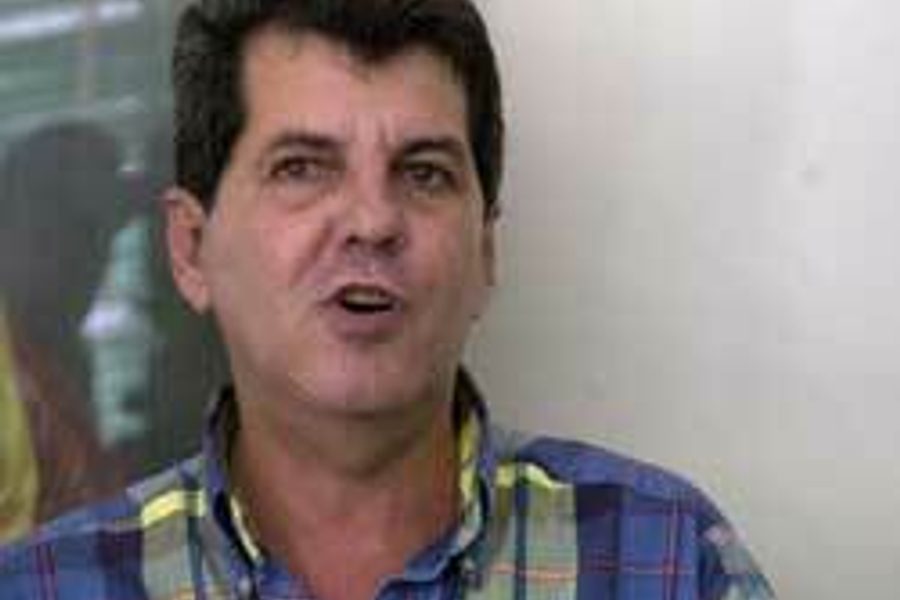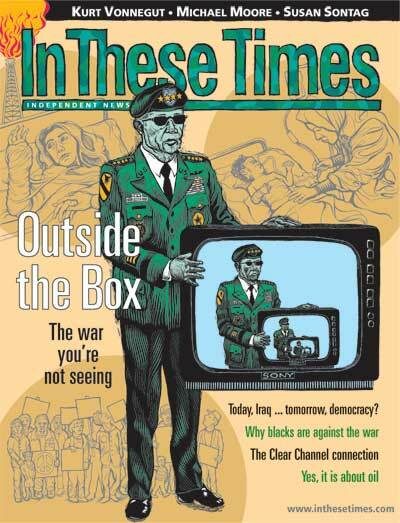
Havana—Maybe more than comedians, dictators rely on timing. Holding power is more than a series of purges, rallies and rigged elections. One has to know when to play the tyrant and when to play the savior. Fidel Castro, the world’s longest ruling dictator, proved he still has the knack last month when he timed a crackdown on internal dissent to coincide with the beginning of war in Iraq.
Hours before the first American cruise missiles hit Baghdad, Cuban security forces began rounding up independent journalists, democracy activists and other dissidents. In five days, 76 people had been arrested, according to the independent Cuban Commission on Human Rights and Reconciliation. None were immediately charged with a crime, though Cuban officials expressed their intention to try those it has labeled “counterrevolutionaries” and “traitors.”
To many observers, the latest shakedown shows that Castro had lost his patience—both with his increasingly outspoken domestic critics and with James Cason, chief of the U.S. diplomatic mission in Havana, who has offered free Internet access, office space and encouragement to dissidents taking on Castro’s one-party Communist rule.
But while Castro had some of his strongest foes collared and threatened to have Cason expelled, Oswaldo Paya, his most celebrated internal critic, was notably ignored. That omission, more than the crackdown itself, might foreshadow the future of Cuba’s dissident movement.
Paya is the author of the Varela Project, a constitutionally permitted petition demanding greater human rights, amnesty for nonviolent political prisoners, free enterprise and electoral reform. Last May, Paya presented more than 11,000 signatures to Cuba’s National Assembly and demanded a public referendum on its principles.
Under the Cuban Constitution, the National Assembly should have responded to the petition last fall. Instead, the Castro regime has tried to ignore the Varela Project—named after a 19th century Cuban independence advocate—and discredit Paya, even as his international stature continues to grow. “You know what the secret is to this regime?” Paya rhetorically asks from his home in Havana. “Fear. But the Varela Project lets people say, ‘We are not afraid. Here you have my name and address, and I want change.’ For the first time, the people are mobilizing, and the government is growing fearful.”
The most recent recipient of the Sakharov Prize for Freedom of Expression, the European Union’s top human rights prize, Paya is former Czech President Vaclav Havel’s choice for this year’s Nobel Peace Prize. Earlier this year Paya met Havel, the Pope, Secretary of State Colin Powell and other world leaders on a worldwide tour to promote the Varela Project. No Cuban dissident has ever garnered such renown. Yet from the start, he has been Castro’s most unlikely rival. The voice of Cuban political opposition has typically come from Miami’s hard-line, exile Cuban community, and in the opinion of that constituency, the Varela Project was doomed.
Conventional wisdom had it that Paya could never organize the grassroots network the Varela Project required. Yes, the Cuban Constitution ostensibly permitted such a petition, but it seemed like a ploy—a tempting lever of democracy deep within Castro’s totalitarian apparatus that no one would be foolish enough to grasp.
And the project itself was rather too conciliatory for Miami Cubans’ liking. They wanted to confront the Castro regime head-on, while the Varela Project sought reform. Even if Paya got his signatures, Miami Cubans were not likely to support it.
But if Miami Cubans were skeptical, Paya’s fellow dissidents were inspired. Unlike every dissident effort before it, the Varela Project challenges the Castro regime on its own terms. It does not come as a vendetta, but as a very patient question: When are we going to get our freedom?
Not surprisingly, Castro has tried to change the subject. Last spring, he organized a national referendum on Cuba’s communist system. After days of government-sponsored marches and rallies, 99 percent of Cuban voters endorsed the proposal making the island’s communist system “irrevocable.”
It was a cynical mockery of the Varela Project that at any other time would have left Castro well satisfied. But, as he knows better than anyone, 8 million extorted votes for communism do not amount to one freely given signature for democracy. Next to the Varela Project, Castro’s theatrics seem strained and unconvincing.
In another era, back when the Soviet Union was the only power that mattered to Castro, Paya would have been dealt with summarily. Even today, if Paya was a shrill extremist of the Miami variety, he could be easily discredited. But that era is gone, and the Varela Project is implicitly reasonable.
All of that leads us to the events in Cuba last month. Castro ordered a crackdown to prove he still could. But while half of those arrested were Varela Project activists, the group’s leader was spared. One can only conclude that, for Castro, arresting Paya would be more trouble than it is worth, bringing the kind of international condemnation his broken regime would just as soon avoid. In short, Oswaldo Paya has the world’s attention, and Fidel Castro is rattled.
Hours before the first American cruise missiles hit Baghdad, Cuban security forces began rounding up independent journalists, democracy activists and other dissidents. In five days, 76 people had been arrested, according to the independent Cuban Commission on Human Rights and Reconciliation. None were immediately charged with a crime, though Cuban officials expressed their intention to try those it has labeled “counterrevolutionaries” and “traitors.”
To many observers, the latest shakedown shows that Castro had lost his patience—both with his increasingly outspoken domestic critics and with James Cason, chief of the U.S. diplomatic mission in Havana, who has offered free Internet access, office space and encouragement to dissidents taking on Castro’s one-party Communist rule.
But while Castro had some of his strongest foes collared and threatened to have Cason expelled, Oswaldo Paya, his most celebrated internal critic, was notably ignored. That omission, more than the crackdown itself, might foreshadow the future of Cuba’s dissident movement.
Paya is the author of the Varela Project, a constitutionally permitted petition demanding greater human rights, amnesty for nonviolent political prisoners, free enterprise and electoral reform. Last May, Paya presented more than 11,000 signatures to Cuba’s National Assembly and demanded a public referendum on its principles.
Under the Cuban Constitution, the National Assembly should have responded to the petition last fall. Instead, the Castro regime has tried to ignore the Varela Project—named after a 19th century Cuban independence advocate—and discredit Paya, even as his international stature continues to grow. “You know what the secret is to this regime?” Paya rhetorically asks from his home in Havana. “Fear. But the Varela Project lets people say, ‘We are not afraid. Here you have my name and address, and I want change.’ For the first time, the people are mobilizing, and the government is growing fearful.”
The most recent recipient of the Sakharov Prize for Freedom of Expression, the European Union’s top human rights prize, Paya is former Czech President Vaclav Havel’s choice for this year’s Nobel Peace Prize. Earlier this year Paya met Havel, the Pope, Secretary of State Colin Powell and other world leaders on a worldwide tour to promote the Varela Project. No Cuban dissident has ever garnered such renown. Yet from the start, he has been Castro’s most unlikely rival. The voice of Cuban political opposition has typically come from Miami’s hard-line, exile Cuban community, and in the opinion of that constituency, the Varela Project was doomed.
Conventional wisdom had it that Paya could never organize the grassroots network the Varela Project required. Yes, the Cuban Constitution ostensibly permitted such a petition, but it seemed like a ploy—a tempting lever of democracy deep within Castro’s totalitarian apparatus that no one would be foolish enough to grasp.
And the project itself was rather too conciliatory for Miami Cubans’ liking. They wanted to confront the Castro regime head-on, while the Varela Project sought reform. Even if Paya got his signatures, Miami Cubans were not likely to support it.
But if Miami Cubans were skeptical, Paya’s fellow dissidents were inspired. Unlike every dissident effort before it, the Varela Project challenges the Castro regime on its own terms. It does not come as a vendetta, but as a very patient question: When are we going to get our freedom?
Not surprisingly, Castro has tried to change the subject. Last spring, he organized a national referendum on Cuba’s communist system. After days of government-sponsored marches and rallies, 99 percent of Cuban voters endorsed the proposal making the island’s communist system “irrevocable.”
It was a cynical mockery of the Varela Project that at any other time would have left Castro well satisfied. But, as he knows better than anyone, 8 million extorted votes for communism do not amount to one freely given signature for democracy. Next to the Varela Project, Castro’s theatrics seem strained and unconvincing.
In another era, back when the Soviet Union was the only power that mattered to Castro, Paya would have been dealt with summarily. Even today, if Paya was a shrill extremist of the Miami variety, he could be easily discredited. But that era is gone, and the Varela Project is implicitly reasonable.
All of that leads us to the events in Cuba last month. Castro ordered a crackdown to prove he still could. But while half of those arrested were Varela Project activists, the group’s leader was spared. One can only conclude that, for Castro, arresting Paya would be more trouble than it is worth, bringing the kind of international condemnation his broken regime would just as soon avoid. In short, Oswaldo Paya has the world’s attention, and Fidel Castro is rattled.
Patrick Michael Rucker, author of This Troubled Land, is the Financial Times correspondent in Havana.






